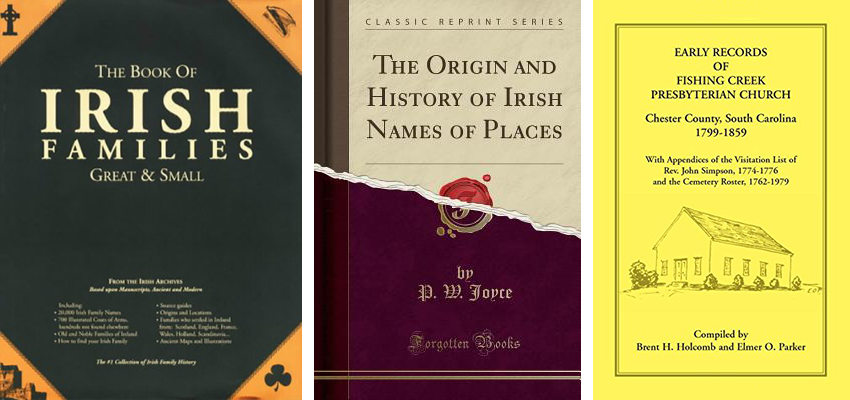Irish Families turns over a new leaf for genealogists

Reprinted Column by Lloyd DeWitt Bockstruck: 15 July 1995
It is probable that many Americans who consider themselves Irish are unaware that their immigrant ancestors from that island did not. A number of Welsh, Huguenots, Palatines, Scots and English located there. During the colonial period, the bulk of those arriving from Ireland were actually Ulster-Scots or Scots-Irish. In no way did they consider themselves Irish.
Michael O’Laughlin’s The Book of Irish Families Great & Small extends coverage to all of the people who have called Ireland home. It has 2,000 family entries (two to 50 lines each) arranged in alphabetical order, as well as illustrations of some 600 coats of arms.

Most people think that everyone who shares the name on the coat of arms is automatically entitled to the insignia. That is not the case. In an illiterate society, where learning was almost entirely limited to church leaders, people resorted to using pictorial representations to identify themselves. Since one’s coat of arms was his way of making his signature, or, more properly, his mark, on a document, no two people could have the same coat of arms. A coat of arms was unique. It would be analogous to a Social Security number today. So every person who descended from the original recipient of a coat of arms had to have a different one. There was no such thing as a “family” coat of arms. There were elements on one’s coat of arms to show one was descended from a certain ancestor, but one still had to have a coat that differed in some way. Sometimes the color varied. In other cases, additional elements were incorporated into the design of the shield. The ordinary rank and file had no coat of arms. Of America’s presidents, George Washington was the only one born with a coat of arms.
Mr. O’Laughlin’s book presents a great deal of information in a single source, and that is its strength. The location and source index contains 16,000 additional names. The book sells for $28 from Irish Family Journal.
The Origin and History of Irish Names of Places is a three-volume work setting forth the derivation and meaning of more than 18,000 Irish place names. This landmark work is a boon to genealogists. The paperback is 1,756 pages and sells for $115 plus $3.50 handling from Clearfield Company.
Early Records of Fishing Creek Presbyterian Church, Chester County, South Carolina 1799-1859 by Brent Holcomb features pastoral visitation lists of the families who were members of the church, as well as baptisms, marriages, and deaths. In addition there are removals and a cemetery roster. The 191-page paperback sells for $16.50. Write Heritage Books, Inc.
Source: Copyright 1998 by Dallas Genealogical Society from “Family Tree” Weekly Newspaper Columns from The Dallas Morning News 1991-1996 by Lloyd DeWitt Bockstruck
